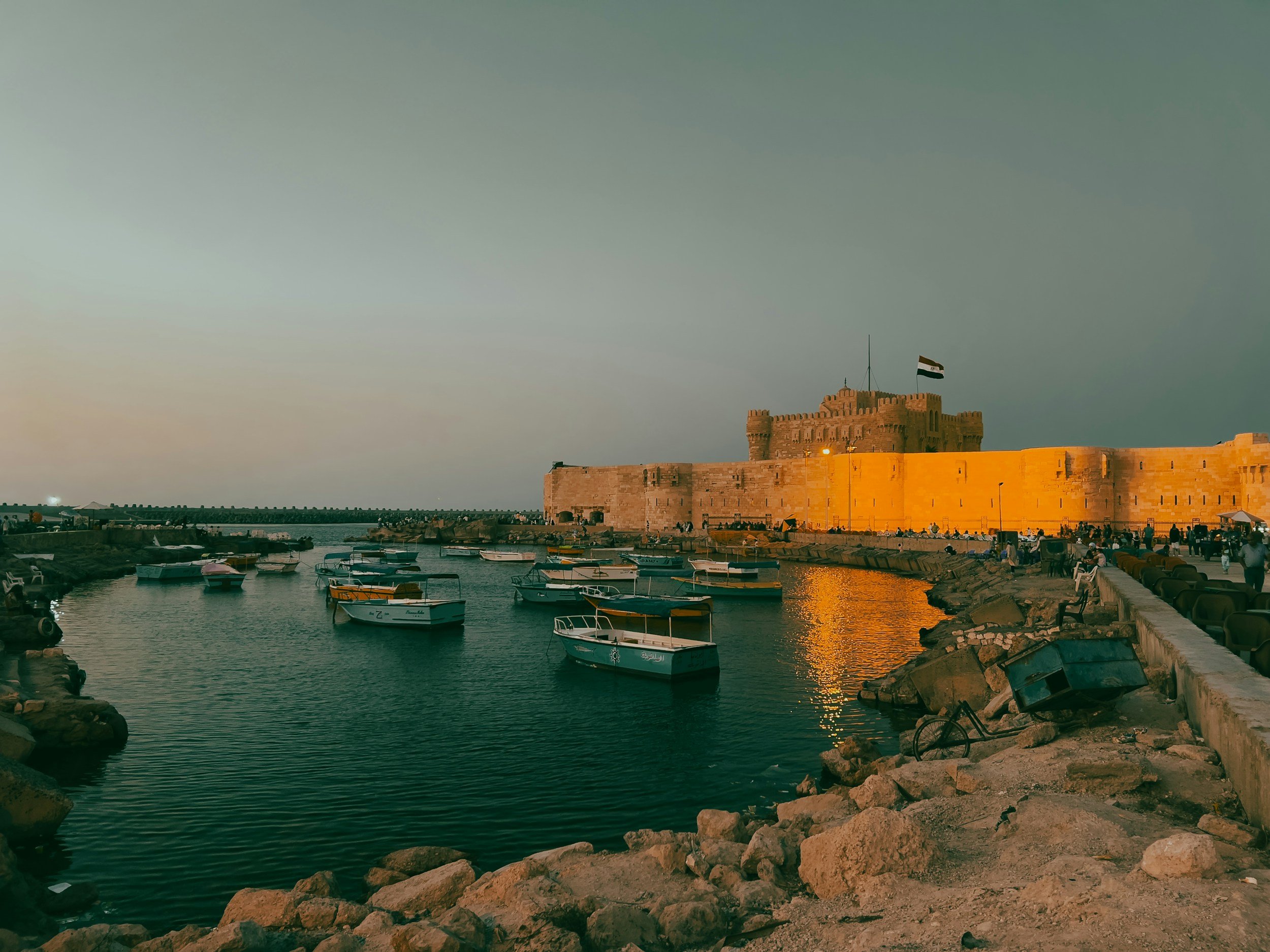
Climate Change Impacts on Culture and Heritage
Pictured: Citadel of Qaitbay, Alexandria, Egypt
Earlier in 2022, UN Secretary-General Antonio Guterres said the world was on a “fast track” to disaster and that we risk rendering planet Earth “uninhabitable.” Climate scientists say that the 2020s will be critical and that it is “now or never” to avoid -- through rapid decarbonisation --the worst impacts of climate change, including major cities under water, unprecedented heatwaves, terrifying storms, and the extinction of a million species of plants and animals.
The landmark Paris Agreement signed in 2015 created an internationally agreed goal of holding global warming to 1.5°C over pre-industrial levels. Every increment of warming is of consequence and while 1.5°C of global warming will cause severe damage, the impacts of higher rates of warming will be significantly worse. It is for this reason that the current draft of the new UNESCO World Heritage Policy on climate change says:
the implementation of a precautionary approach that pursues pathways limiting global warming to 1.5°C, with no or limited overshoot, is the most effective approach for the protection, conservation and management of the cultural and natural heritage.
However, most emissions scenarios now show the global warming is expected to hit 1.5°C “in the early 2030s” if not sooner. This raises the prospect of “overshoot” in the next 10 years, plunging the earth into a period when risks to human systems including livelihoods and cultural and spiritual values is expected to further increase. Climate hazards impacting cultural heritage including both rapid-onset events (like typhoons) and slow-onset events (like changes in seasonality and species distribution).
In the face of these trends, it is essential that we improve our understanding and management of climate risks to natural and physical systems, human communities, and culture and heritage. This includes supporting community-led, values-driven, science-based approaches to vulnerability assessment for heritage places and associated communities. Better approaches start by asking stakeholders what they value about these places, focusing on impacts on not only tangible heritage but intangible heritage and values, considering the cultural dimensions of adaptive capacity, and evaluating exposure under multiple emissions scenarios. The outcomes of this work must guide not only adaptation planning for sites and collections but contribution to broader community and regional climate response planning.
Climate Heritage Policy Priorities: Support initiatives to develop better practices in climate vulnerability assessment, risk management, and adaptation planning in order to enhance safeguarding of culture and heritage; better take account of the consequences of impacts to culture and heritage on the broader resilience and adaptive capacity of the communities; and mainstream attention to culture and values and to social infrastructure in broader vulnerability and risk assessment processes and response planning.
Addressing climate change impacts on cultural and natural heritage and promoting science-based, community-led, values-driven climate vulnerability assessments.
Climate Impacts Leadership
-

Sneška Quaedvlieg-Mihailovic
Climate Change Impacts on Cultural Heritage Initiative (Greek Government)
The Hague, Netherlands
-

Adam Markham
National Geographic Initiative
Cambridge, Massachusetts, USA
-

Prof. Khandoker Mahfuz ud Darain, PhD.
National Geographic Initiative
Khulna, Bangladesh






